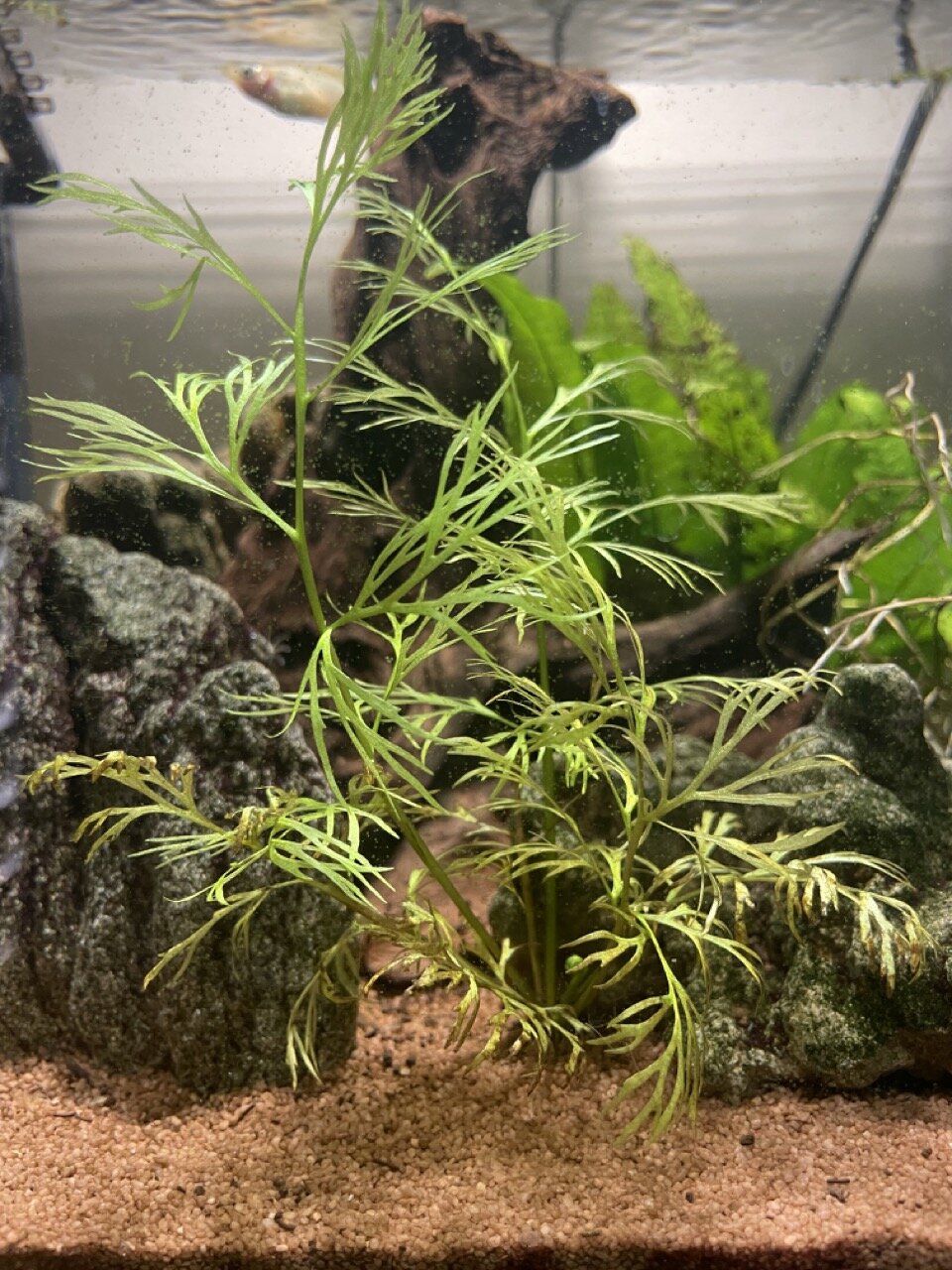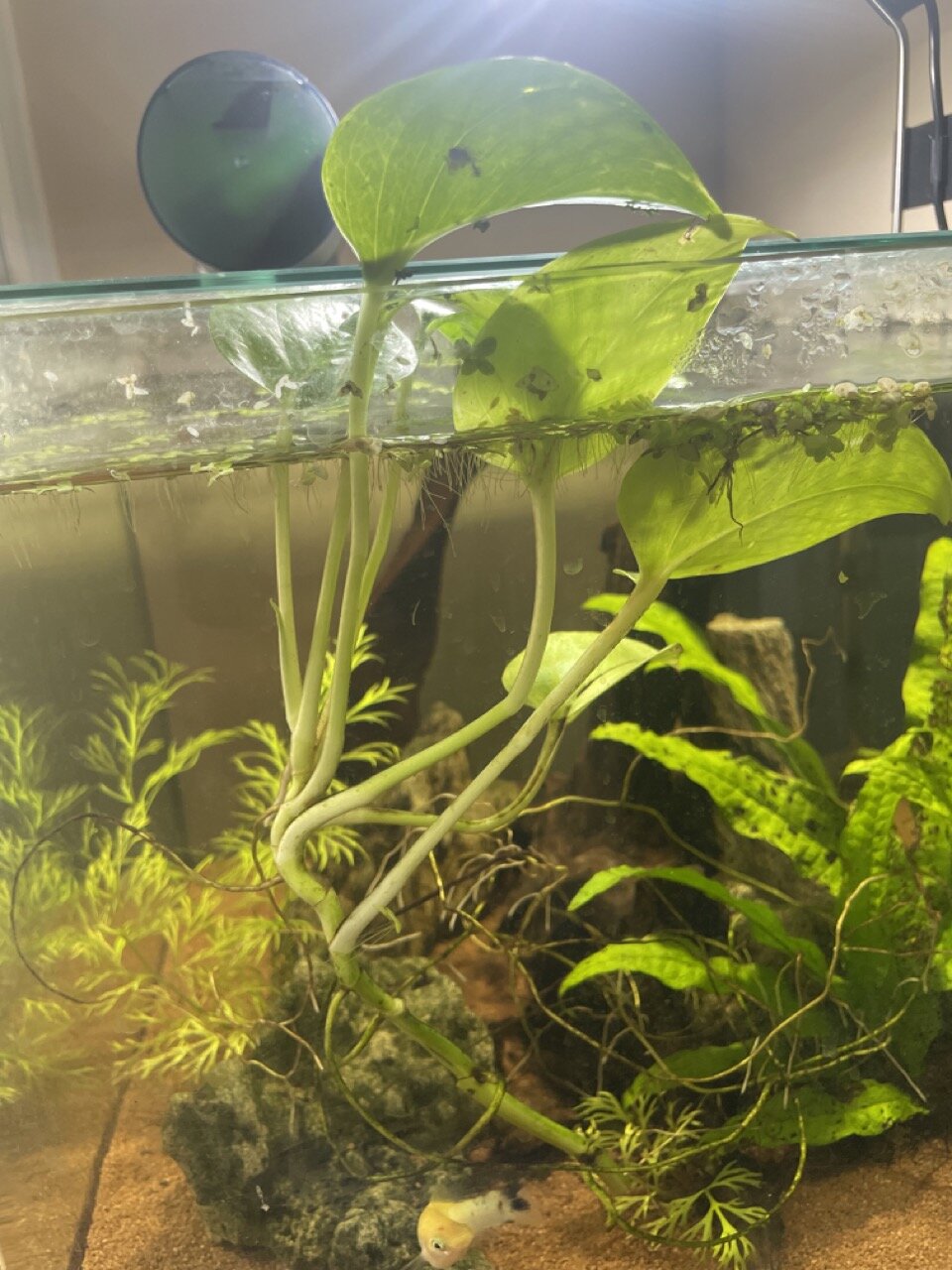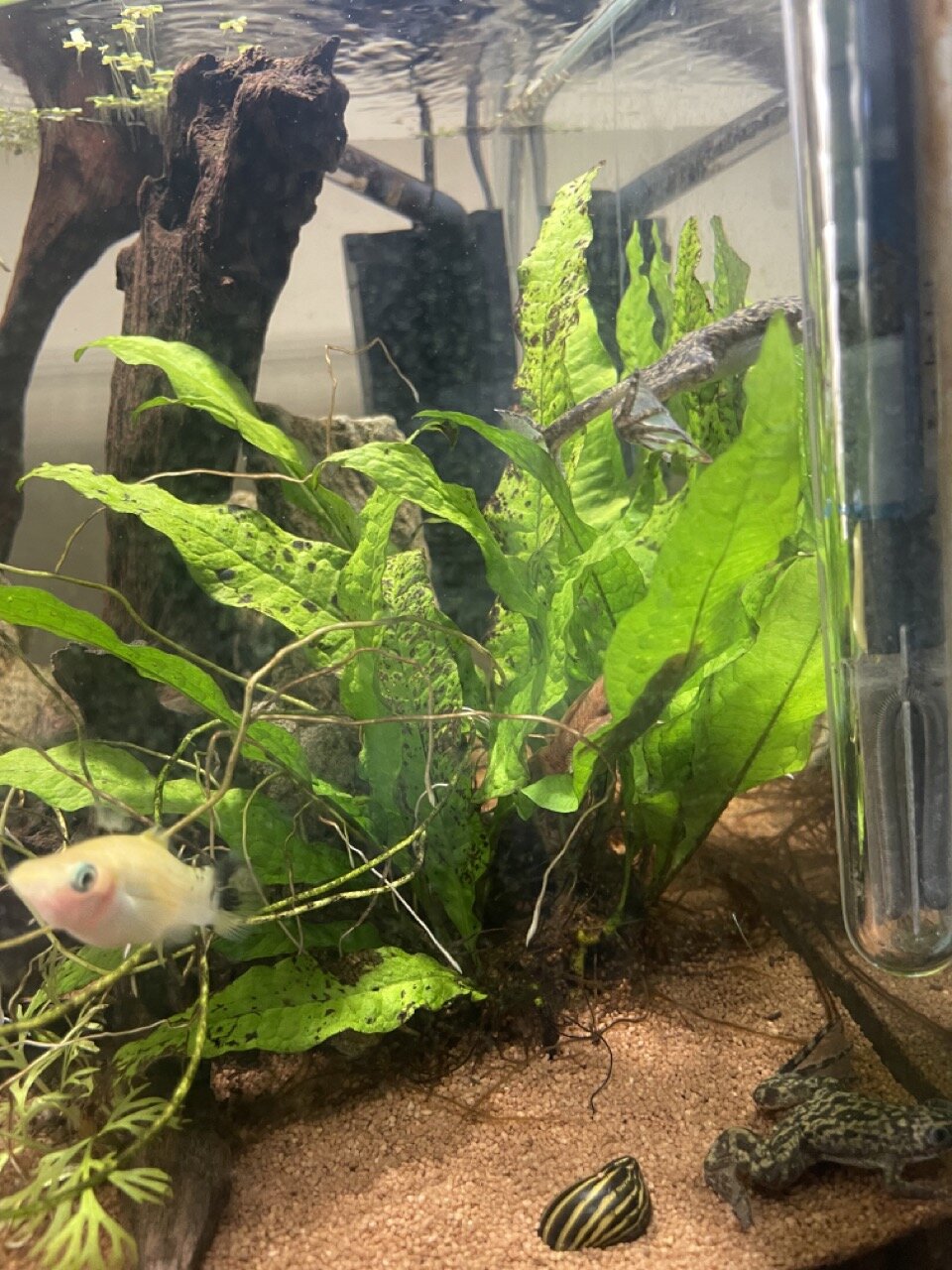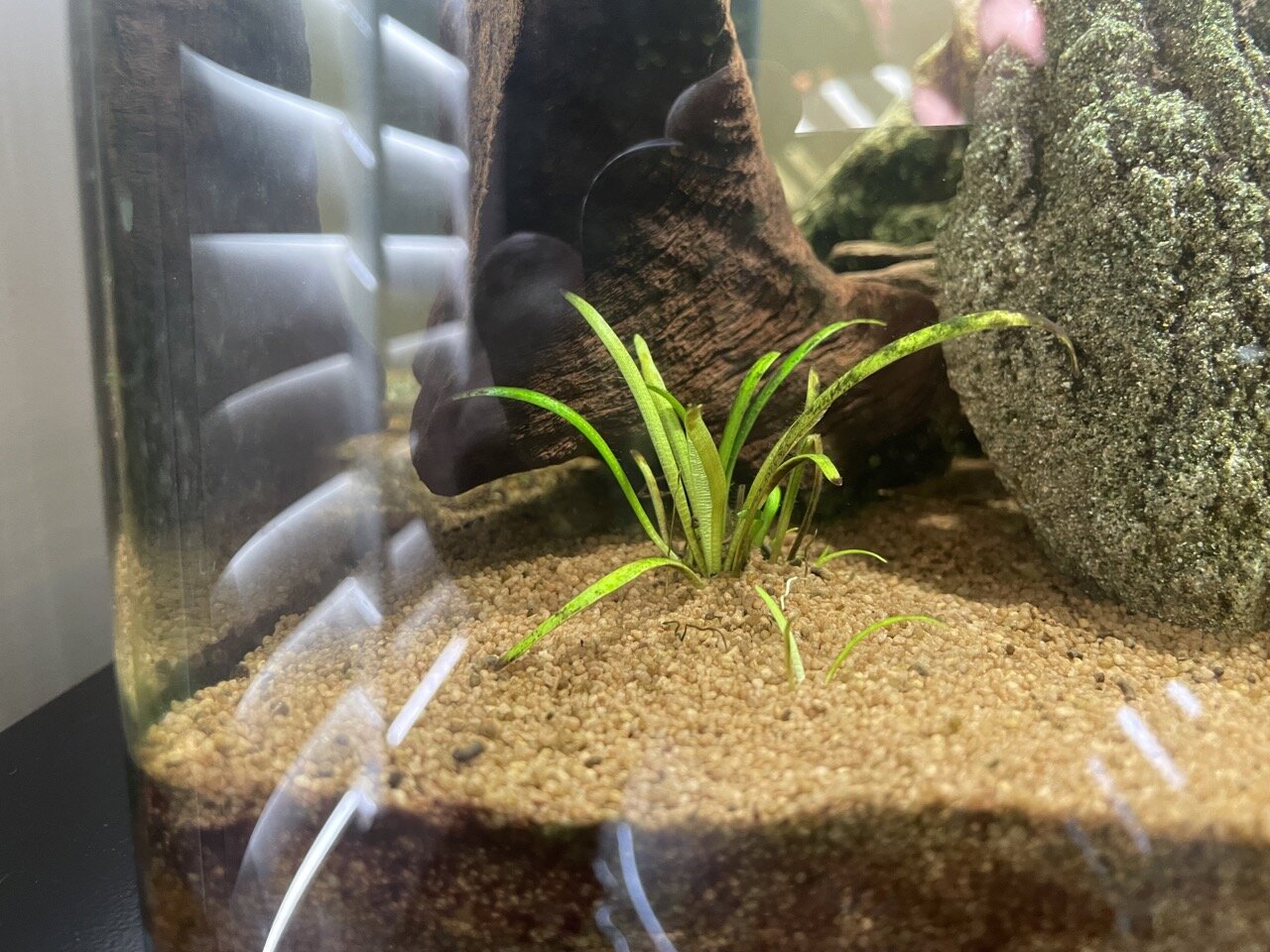froggytank
New Member
Hi all, what a lovely forum. All my information is below. I don't have a green thumb and I was wondering about how best to promote growth in my tank with minimal intervention. For the first 6 months, everything grew like gangbusters, with the java fern breaking the surface, the Amazon sword 8 inches wide, and the duckweed multiplying in scoops. Then over 3 months the Amazon sword got wispy and died, the java fern reduced to half height, and the duckweed stagnated and turned lighter. This has stayed stable for another 3 months. In general I'd prefer to keep costs and interventions to a minimum and not give risk to the animal inhabitants as well. Here are my questions in no particular order:
A) What is your diagnosis for the stagnating growth and what can be done about it sustainably?
B) Are the black spots on my Java fern cause for concern? (picture attached)
C) What plants could I acquire that might thrive in my environment and substrate?
The tank:
1. Size of tank: 35L Dennerle Nano Tank 40cmx32x28; heater set to 76 degrees F
2. Age of the system approximately: 1 year
3. Tap water parameters: I don't have a testing kit; water company claims 7.4pH and hardness of 4gpg
4. Filtration and Media: Dennerle Corner Filter 40L (Corner Filter - Dennerle (EN)) no additional media besides included floss and sponge
5. Lighting and duration: ~10 hours/day Dennerle Trocal LED (Trocal Power LED 5.0 - Dennerle (EN))
6. Substrate: Dennerle Borneo Brown nano gravel (which I was sure was sand until looking it up now) Dennerle Nano Shrimp Gravel - Borneo Brown-2kg
7. Co2 dosing or Non-dosing: nothing
8. Drop Checker: none
9. Fertilizers used + Ratios: none
10. Water change regime and composition: weekly ~40% with a siphon and Seachem Prime in the tap water
11. Plant list + Invitro/Emersed: java fern, pothos, duckweed, grass I can't recall, unknown arugala-like stowaway
12. Inhabitants: 3 African clawed frogs, guppy, platy, pleco
13. Full tank shot and surface image


A) What is your diagnosis for the stagnating growth and what can be done about it sustainably?
B) Are the black spots on my Java fern cause for concern? (picture attached)
C) What plants could I acquire that might thrive in my environment and substrate?
The tank:
1. Size of tank: 35L Dennerle Nano Tank 40cmx32x28; heater set to 76 degrees F
2. Age of the system approximately: 1 year
3. Tap water parameters: I don't have a testing kit; water company claims 7.4pH and hardness of 4gpg
4. Filtration and Media: Dennerle Corner Filter 40L (Corner Filter - Dennerle (EN)) no additional media besides included floss and sponge
5. Lighting and duration: ~10 hours/day Dennerle Trocal LED (Trocal Power LED 5.0 - Dennerle (EN))
6. Substrate: Dennerle Borneo Brown nano gravel (which I was sure was sand until looking it up now) Dennerle Nano Shrimp Gravel - Borneo Brown-2kg
7. Co2 dosing or Non-dosing: nothing
8. Drop Checker: none
9. Fertilizers used + Ratios: none
10. Water change regime and composition: weekly ~40% with a siphon and Seachem Prime in the tap water
11. Plant list + Invitro/Emersed: java fern, pothos, duckweed, grass I can't recall, unknown arugala-like stowaway
12. Inhabitants: 3 African clawed frogs, guppy, platy, pleco
13. Full tank shot and surface image






